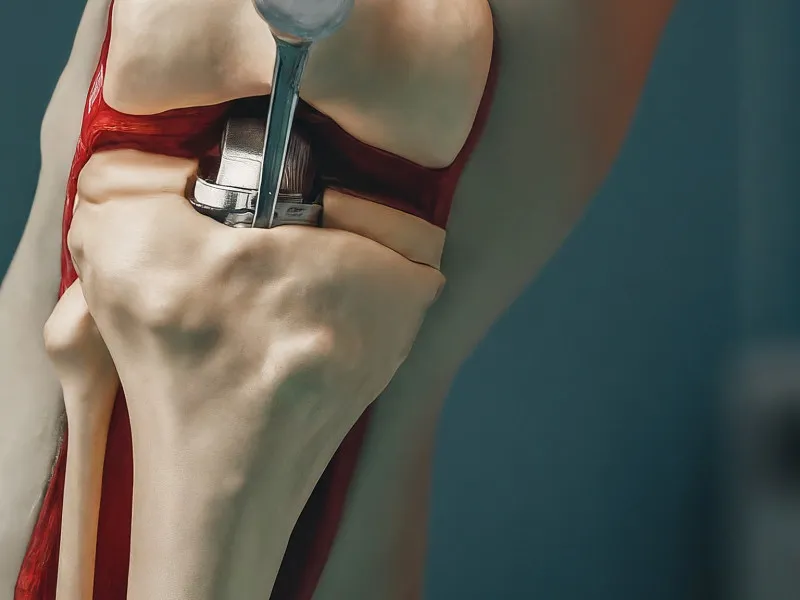
knee replacement surgery, particularly using the TWIS-TKR (Total knee replacement) approach, is a complex yet highly effective procedure for restoring knee function and alleviating pain. This article provides a behind-the-scenes look at the TWIS-TKR technique, its components, and what patients can expect before, during, and after the surgery.
What is the TWIS-TKR Knee Replacement?
The TWIS-TKR system is designed with precision to emulate the natural anatomy and mechanics of your knee. It comprises three main components:
- Femoral Component: This metal piece replaces the end of your femur (thigh bone) after the diseased portion is removed. It is designed to smoothly articulate with the tibia and patella.
- Tibial Component: This includes a metal baseplate that attaches to your tibia (shinbone) and a durable plastic insert acting as new cartilage, providing a smooth gliding surface.
- Patellar Component: A plastic piece that replicates the kneecap, ensuring smooth interaction with the femoral component.
These components work together, supported by TWIS-TKR‘s intelligent stability and custom kinematic rotation alignment, offering a responsive and natural-feeling knee joint.
How Long Does the Surgery Take?
Knee replacement surgery using the TWIS-TKR approach typically takes about 1 to 2 hours. The exact duration depends on the specifics of the procedure and any additional corrective measures needed. During the surgery, the damaged portions of the knee joint are removed and replaced with the artificial components, meticulously aligned to fit the patient’s anatomy perfectly.
What is the Knee Replacement Made Up Of?
TWIS-TKR utilises materials chosen for their durability and compatibility with the human body:
- Metal Alloys: The femoral and tibial components are made from medical-grade cobalt-chromium alloys, known for their strength and biocompatibility. These alloys are free from nickel, reducing the risk of allergic reactions.
- High-Density Polyethylene: The plastic surfaces, including the articular and patellar components, are crafted from ultra-high-molecular-weight polyethylene (UHMWPE) or cross-linked polyethylene (XPE), selected for their wear resistance and smoothness.
These materials ensure the implant’s longevity while providing a natural knee movement experience.
What to Expect During and After Surgery
During Surgery:
- Anesthesia: The surgery is performed under general or regional anesthesia, ensuring you are comfortable and pain-free.
- Procedure: The surgeon makes an incision to access the knee joint, removes the damaged cartilage and bone, and installs the new components. The joint is then tested for stability and alignment before closing the incision.
After Surgery:
- Recovery Room: Post-surgery, you’ll be taken to a recovery room where your vitals will be monitored as the anesthesia wears off.
- Hospital Stay: Most patients stay in the hospital for a few days to manage pain and begin physical therapy.
- Physical Therapy: Rehabilitation starts almost immediately. Initial exercises focus on gentle movements to restore mobility and strength.
The Physics, Chemistry, Biology, and Time Principle in Knee Replacement
Understanding knee replacement through the principles of physics, chemistry, biology, and time can enhance recovery:
- Physics: The mechanical design of the TWIS-TKR components replicates the natural movement of the knee, ensuring stability and reducing wear over time.
- Chemistry: Biocompatible materials reduce the risk of rejection and inflammation, promoting a smoother recovery.
- Biology: The body’s healing processes are supported by immediate post-surgical care and ongoing physical therapy, which are crucial for integrating the new joint.
- Time: Recovery is a gradual process. Adhering to a structured rehabilitation program over several months is essential for optimal outcomes.
FAQs About Knee Replacement Surgery
1. What is the construction of the TWIS-TKR knee replacement? The TWIS-TKR system includes a femoral component, a tibial component with a metal baseplate and plastic insert, and a patellar component. These work together to mimic the natural knee’s function.
2. How long does knee replacement surgery take? The surgery typically takes around 1 to 2 hours, depending on the specifics of the procedure and any additional corrective measures needed.
3. What is the knee replacement made up of? TWIS-TKR uses medical-grade cobalt-chromium alloys for metal parts and high-density polyethylene for plastic components, ensuring durability and biocompatibility.
4. What range of movement does TWIS-TKR offer compared to natural knees? TWIS-TKR is designed to closely emulate the natural range of motion, allowing for a wide array of movements necessary for daily activities and recreational sports.
5. How does TWIS-TKR compare to alternative knee replacements? TWIS-TKR stands out due to its AI-driven precision and customisation, offering enhanced functionality, reduced complications, and faster recovery compared to traditional knee replacements.
6. What are the recommendations for exercise post-TWIS-TKR surgery? Low-impact activities such as swimming, cycling, and walking are encouraged initially. High-impact sports should be avoided to prevent wear on the implant. Personalised exercise plans help ensure optimal recovery.
Knee replacement surgery with the TWIS-TKR approach is a major procedure that offers significant improvements in knee function and pain relief. Understanding the intricacies of the surgery and the rehabilitation process can help patients prepare and achieve the best possible outcomes.
